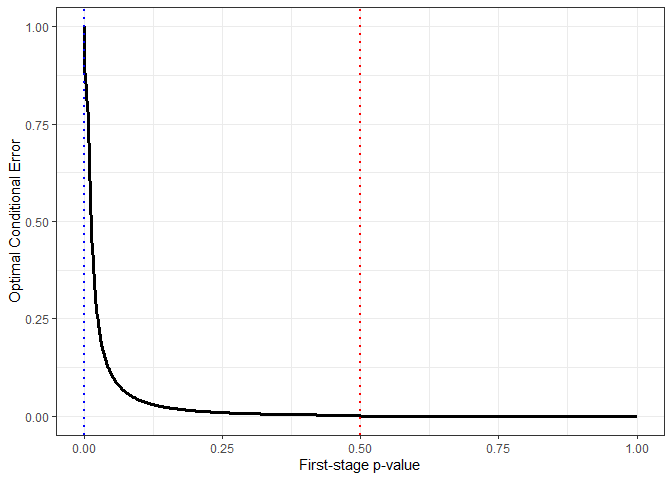
The hardware and bandwidth for this mirror is donated by METANET, the Webhosting and Full Service-Cloud Provider.
If you wish to report a bug, or if you are interested in having us mirror your free-software or open-source project, please feel free to contact us at mirror[@]metanet.ch.
The goal of optconerrf is to enable the use of adaptive
two-stage clinical trial designs with the optimal conditional error
function approach proposed by Brannath & Bauer (2004). The optimal
conditional error function minimises the expected second-stage sample
size/information under the assumption that the true effect size is
known. As an extension to the original methodology,
optconerrf allows the effect size used to plan the second
stage to depend on the interim data.
You can install the development version of optconerrf from GitHub with:
# install.packages("devtools")
devtools::install_github("morten-dreher/optconerrf")Installing from CRAN can be done via:
install.packages("optconerrf")A design object with the following properties:
alpha = 0.025)alpha1 = 0.0001,
p-value scale)alpha0 = 0.5, p-value
scale)conditionalPower = 0.9)delta1 = 0.25)delta1
to plan the secon d stage, useInterimEstimate = FALSE)firstStageInformation = 100)likelihoodRatioDistribution = "fixed") with effect 0.25
(deltaLR = 0.25) (i.e., minimising the expected
second-stage information under the assumption that the true effect size
is 0.25)can be generated by the code below.
library(optconerrf)
trialDesign <-
getDesignOptimalConditionalErrorFunction(
alpha = 0.025,
alpha1 = 0.0001,
alpha0 = 0.5,
conditionalPower = 0.9,
delta1 = 0.25,
useInterimEstimate = FALSE,
firstStageInformation = 100,
likelihoodRatioDistribution = "fixed",
deltaLR = 0.25
)The design object can then be passed to other central package
functions, such as getExpectedSecondStageInformation():
getExpectedSecondStageInformation(
trialDesign,
likelihoodRatioDistribution = "fixed",
deltaLR = 0)
#> [1] 99.84901The above code calculates the expected second-stage information of
the design for a scenario under the null hypothesis
(deltaLR = 0).
optconerrf also implements plot() and
print() generics:
plot(trialDesign)
print(trialDesign)
#> Optimal Conditional Error Function Design:
#>
#> General design parameters:
#> Overall significance level: 0.025
#> First-stage efficacy boundary (p-value scale): 1e-04
#> Binding first-stage futility boundary (p-value scale): 0.5
#>
#> Conditional power specification:
#> Target conditional power: 0.9
#> Alternative: 0.25
#> First-stage non-centrality parameter: 2.5
#> First-stage information: 100
#>
#> Likelihood ratio specification:
#> Fixed parameter(s) in likelihood ratio: 0.25
#> Parameter weights: 1
#>
#> Level constant:
#> Constant: 7.079328
#> Searched on interval: [0, 10]These binaries (installable software) and packages are in development.
They may not be fully stable and should be used with caution. We make no claims about them.